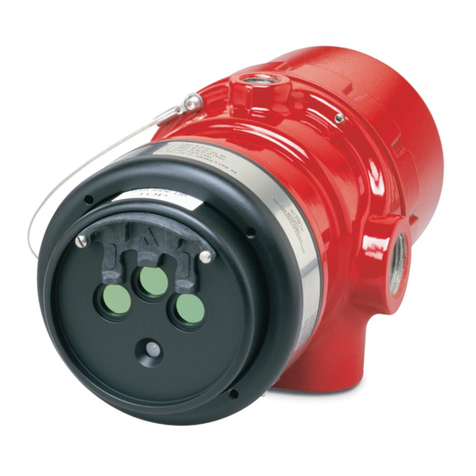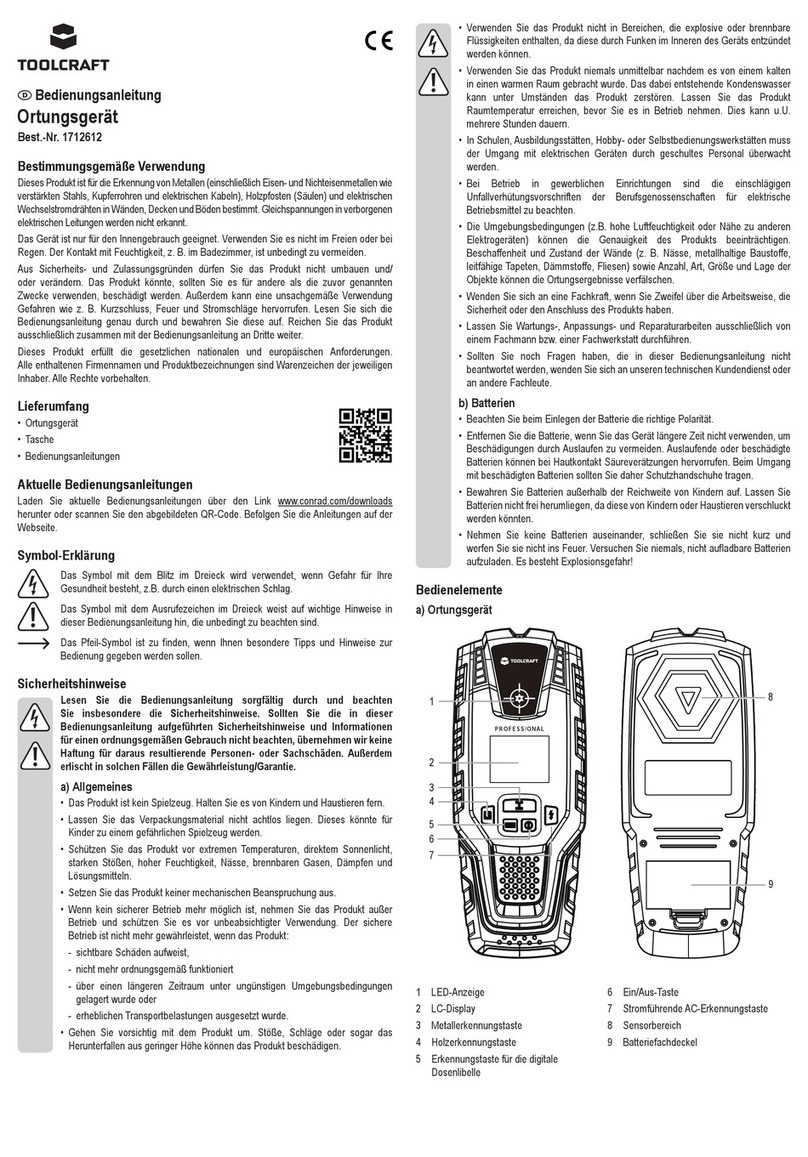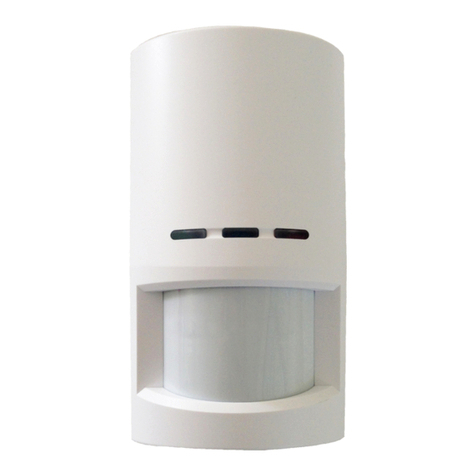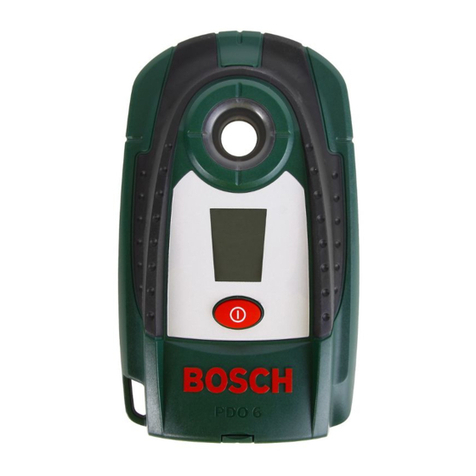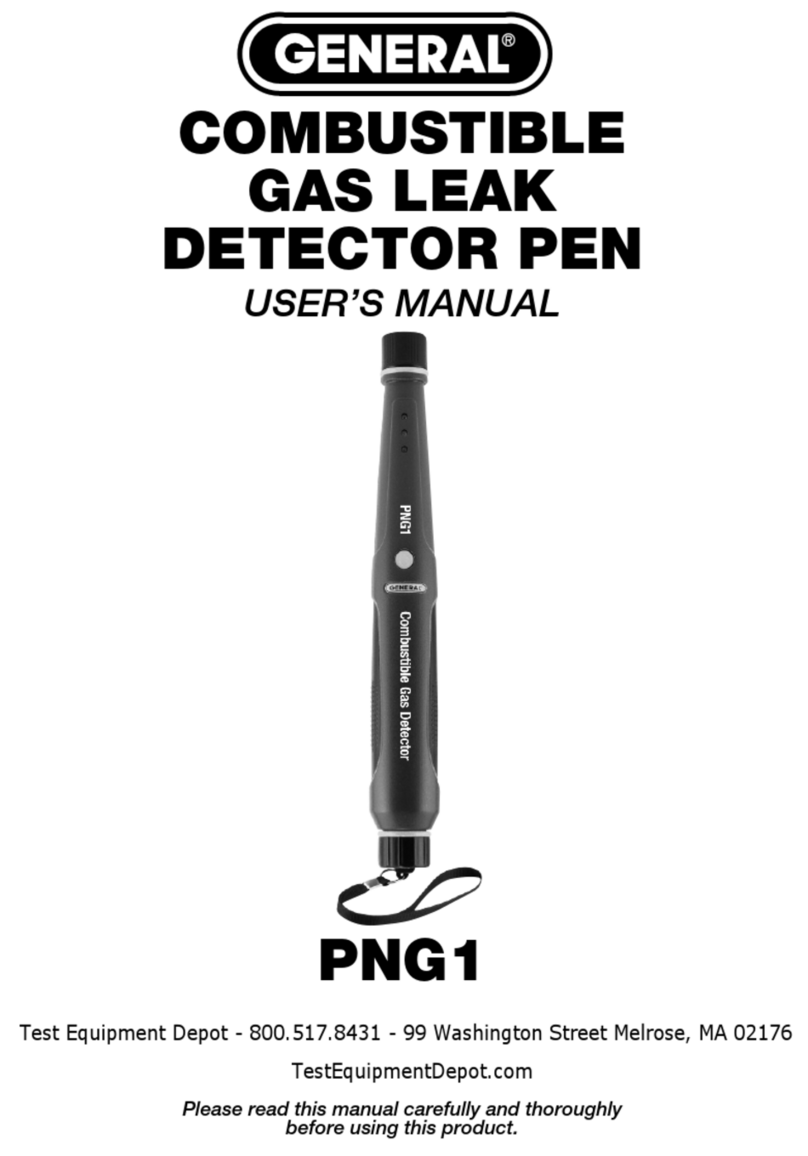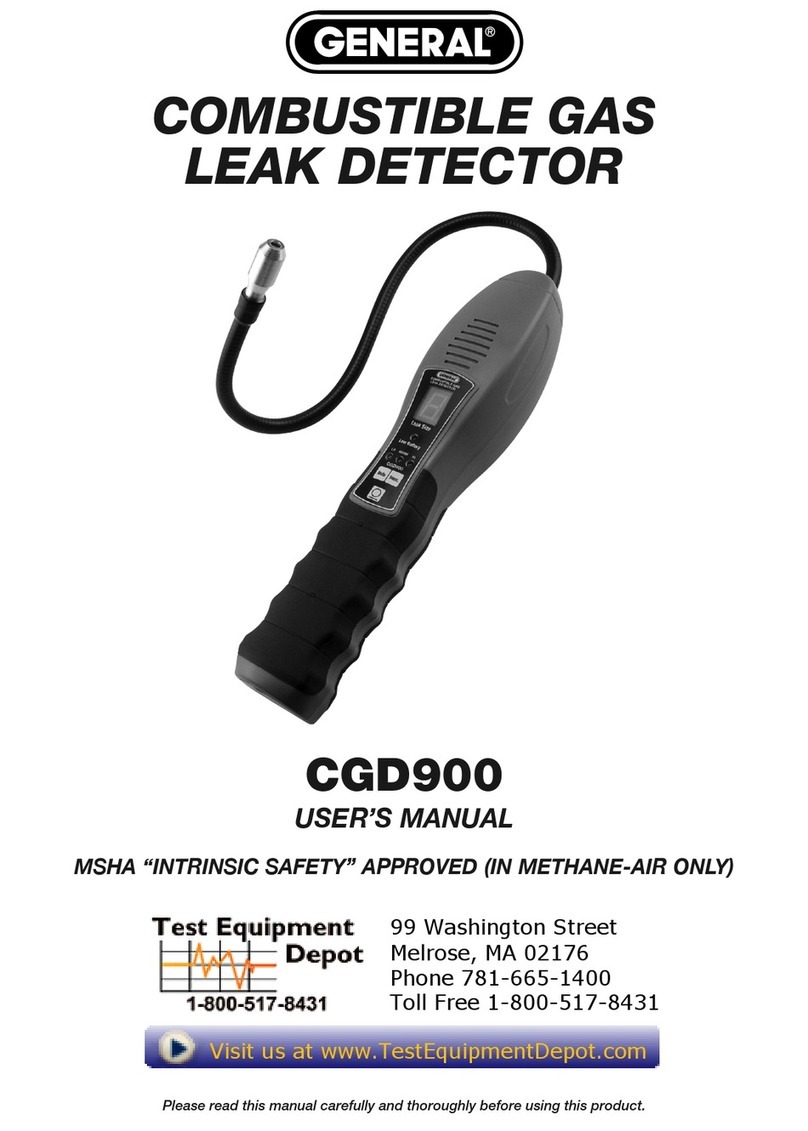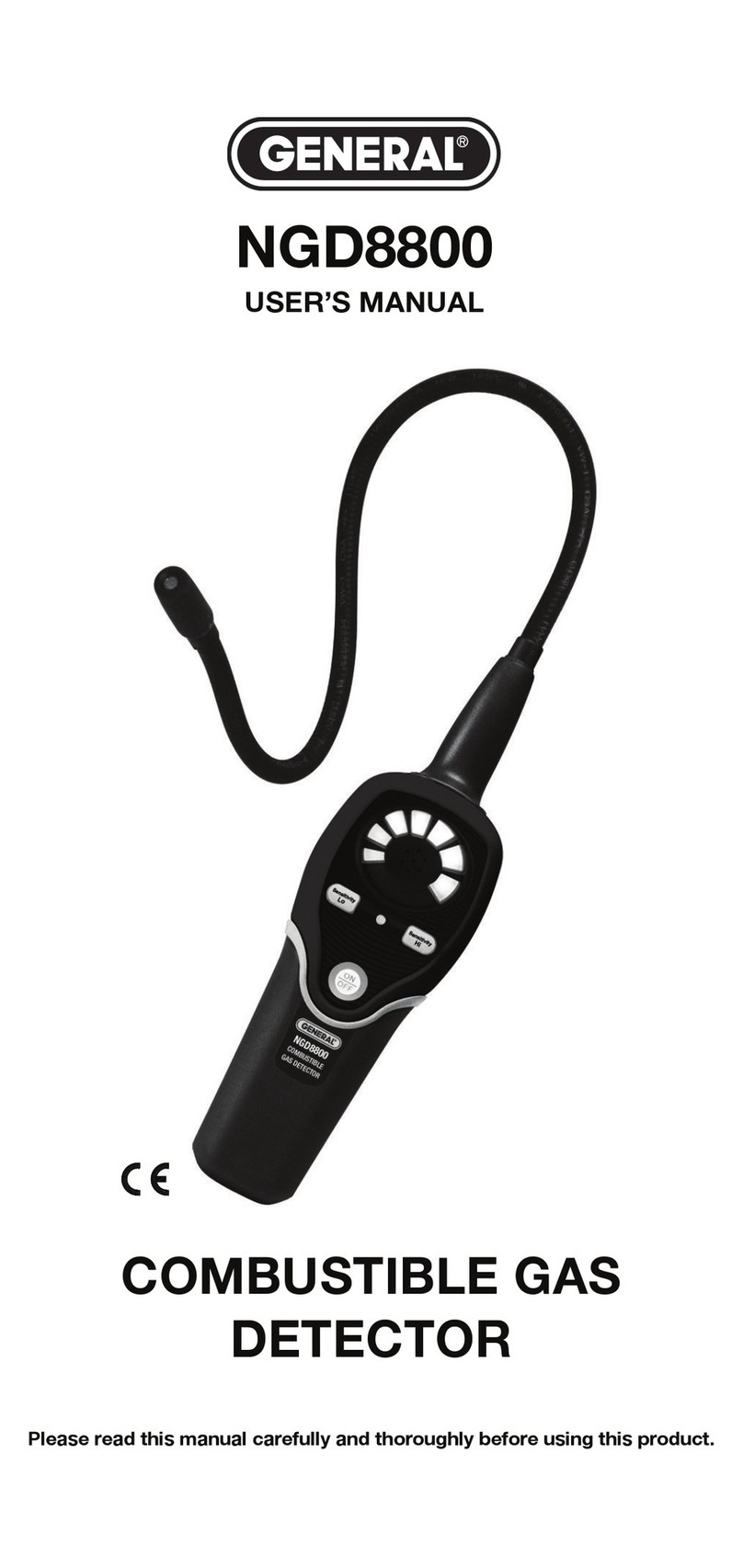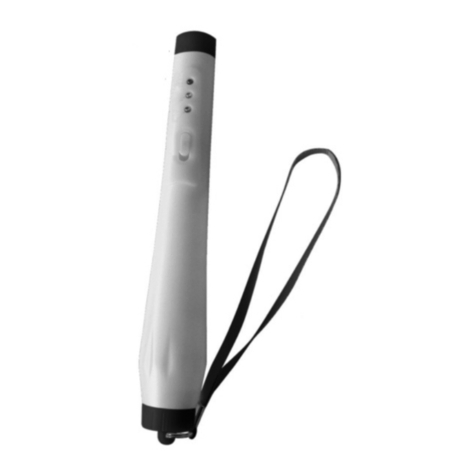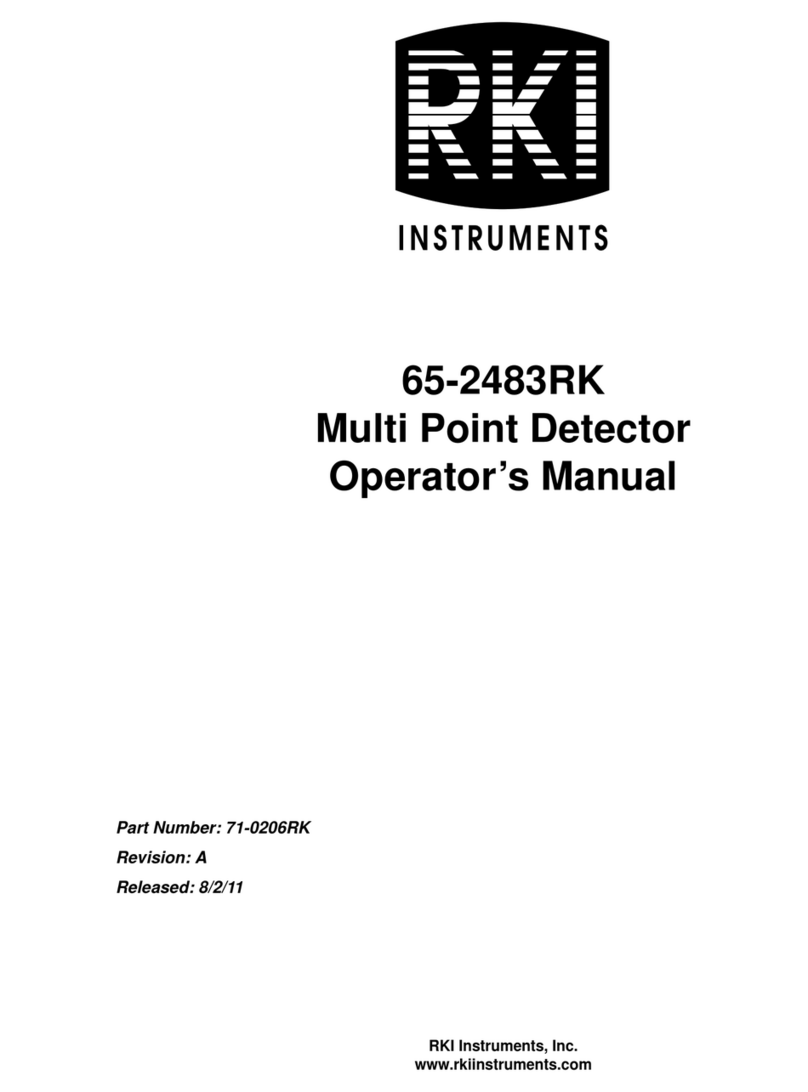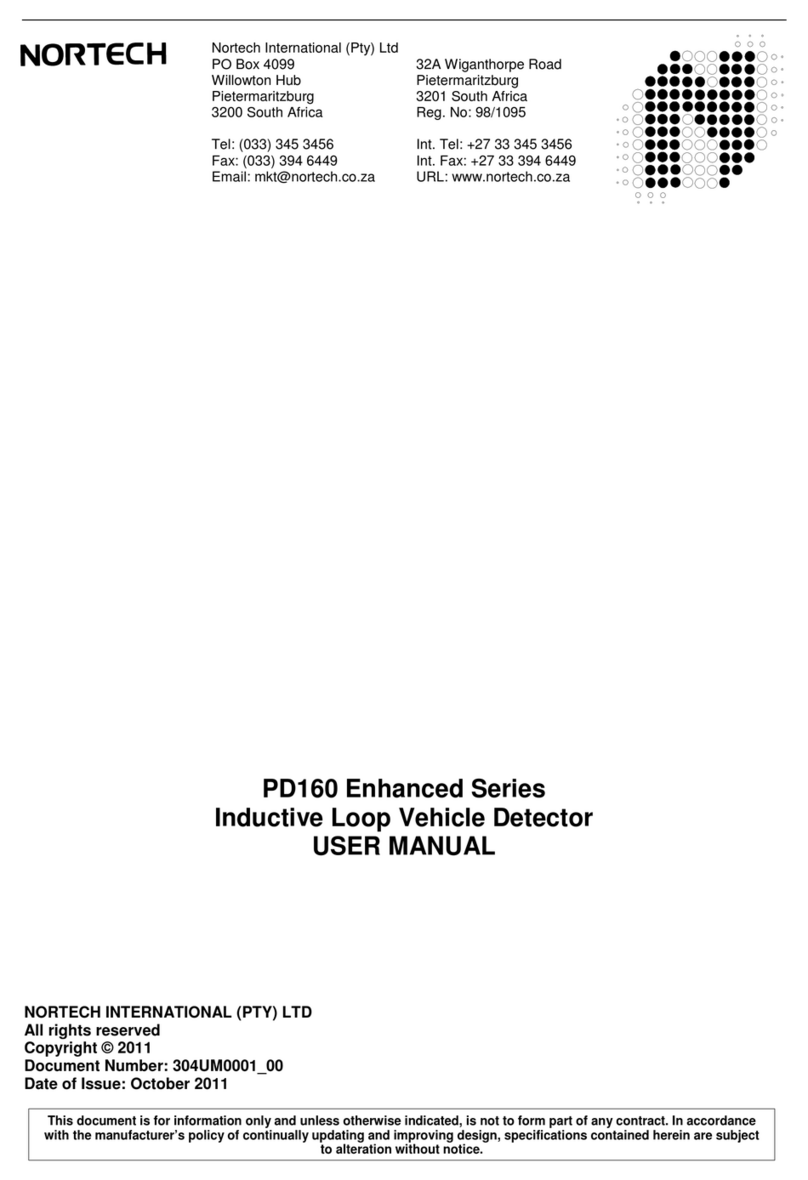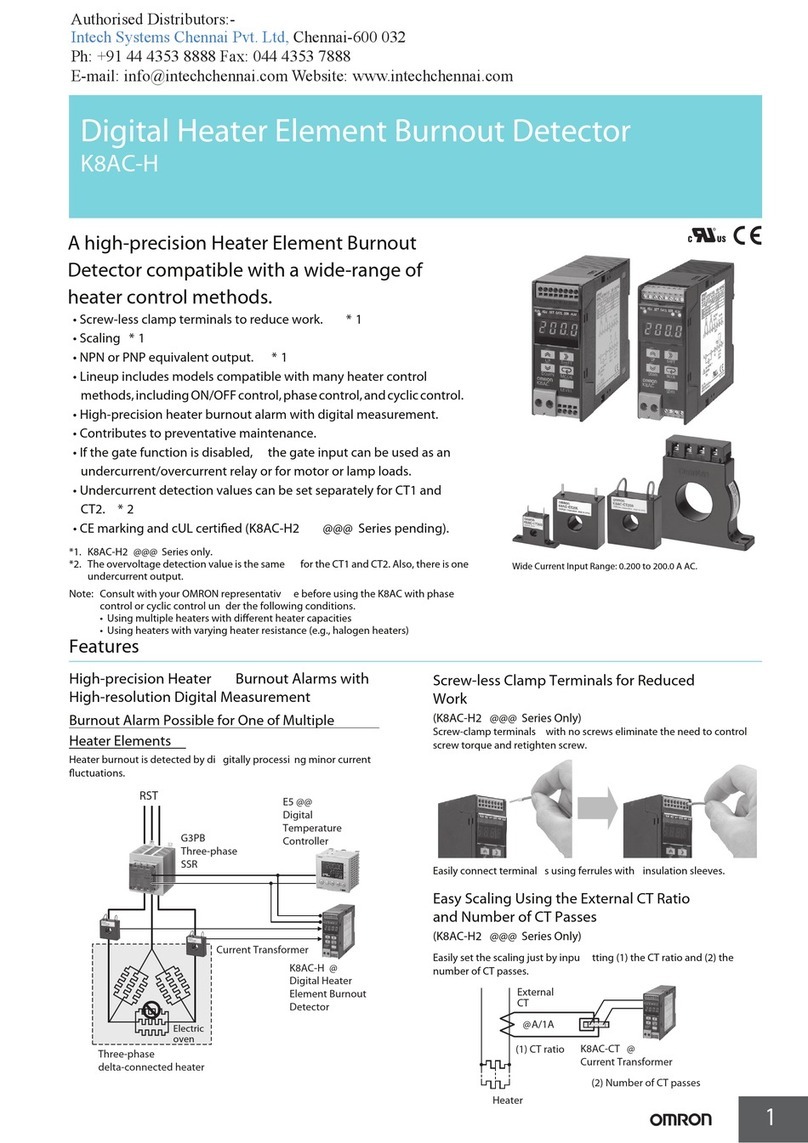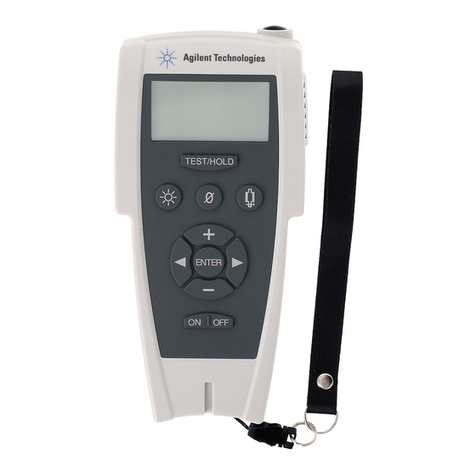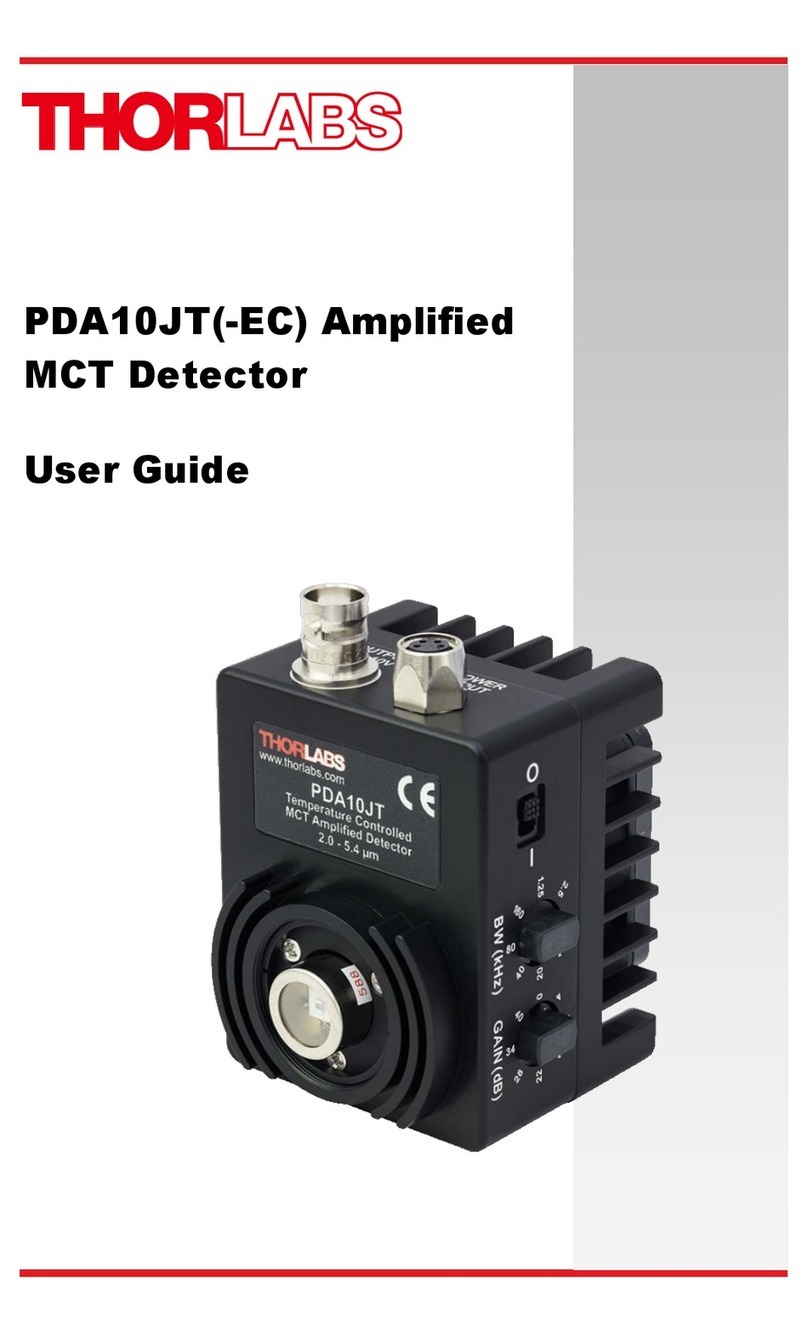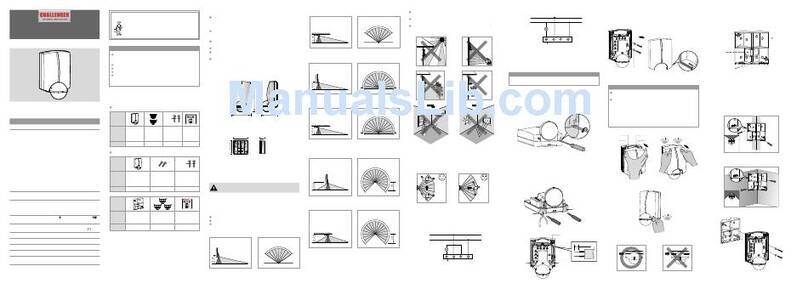
In detection mode, changes in the width of the bar graph readout as the probe is moved around pipes and fittings are a reliable
proxy for higher and lower detected gas concentration at specific locations. So, too, are the characteristics of the instrument’s
audible alarm, which sounds at a speed and frequency proportional to the measured gas concentration. The higher the
concentration, the faster the beep and the higher the tone. To mute the alarm, press the button. This will change the icon in
the upper right corner of the display from to .
If you are working in a noisy environment, eneral recommends leaving the alarm on and using headphones to avoid missing any
changes in gas concentration reflected by changes in alarm characteristics. The headphone jack on the left side of the N D269 (Fig.
1, Callout 8) accepts a standard 3.5mm mini-stereo plug.
MEASURING CH4, C3H8AND H2
The N D269’s digital readout gives you a third way to compare local concentrations of methane/natural gas, propane and hydrogen
(assuming the instrument has been properly and recently calibrated). The callouts below Fig. 2 explain how to convert the values
shown on the screen to concentrations. Bear in mind that for methane/natural gas, propane and hydrogen, displayed concentration
values are relative, rather than absolute. They are also most accurate for target gas concentrations within the selected measurement
range.
When powered on, the N D269 will begin displaying gas concentrations using the last selected measurement unit. To change the
measurement unit, press the and Zero buttons at the same time to cycle through the three measurement unit options: ppm,
%LEL (lower explosive level) and %Vol (percentage by volume).
To make it easier to detect gas leaks in any setting, the N D269 allows you to make the gas concentration of the working
environment the measurement baseline. To do so, press the Zero button.
To power the NGD269 off, press the and Zero buttons at the same time.
CALIBRATION
To make its relative measurements of methane/natural gas, propane and hydrogen concentration as accurate as possible, eneral
recommends calibrating the N D269 at least once every six months for each gas it is expected to measure. The instrument can be
calibrated for one, two or all three potential target gases during a single session.
Calibration for a particular gas requires having one or more cylinders (each with a different concentration) of a standard reference
gas on hand. Often called calibration gases, they are readily available from multiple vendors as individual cylinders, or bundled with
a flow regulator in a kit.
STEP 1. ENTER CALIBRATION MODE
To begin, with the unit powered off press the and buttons simultaneously. The unit will respond by powering on with a
display that initially shows the text DEMARCATE . . . After a few seconds, a three-minute warmup will begin, with the display
counting down the remaining warmup time in seconds.
STEP 2. SELECT A GAS AND RANGE
Once warmup is complete, the screen will automatically display the following interface (with C3H8or H2possibly replacing
CH4, and showing a different range as well.)
To change the target gas from the one first shown, press the button to cycle through
the three options: CH4(methane/natural gas), C3H8(propane) and H2(hydrogen).
For each target gas, the value on the RANGE line will change to one of its available
measurement ranges. To change the range for the selected target gas, press the
Zero button to cycle through the available ranges (in ppm) for that gas.
5
A typical display during Calibration Step 2
For CH4(methane/natural gas), the available ranges are:
• 0 to 10,000 ppm (0 to 20%LEL or 0 to 1%Vol);
• 0 to 20,000 ppm (0 to 40%LEL or 0 to 2%Vol);
• 0 to 30,000 ppm (0 to 30%LEL or 0 to 3%Vol); and
• 0 to 50,000 ppm (0 to 100%LEL or 0 to 5%Vol)
For C3H8(propane), the available ranges are:
• 0 to 10,000 ppm (0 to 48%LEL or 0 to 1%Vol); and
• 0 to 20,000 ppm (0 to 96%LEL or 0 to 2%Vol)
For H2(hydrogen), the only available range is
0 to 10,000 ppm (0 to 25%LEL or 0 to 1%Vol).
Once you have selected a target gas and its measurement range, press the button to proceed to the next step.

